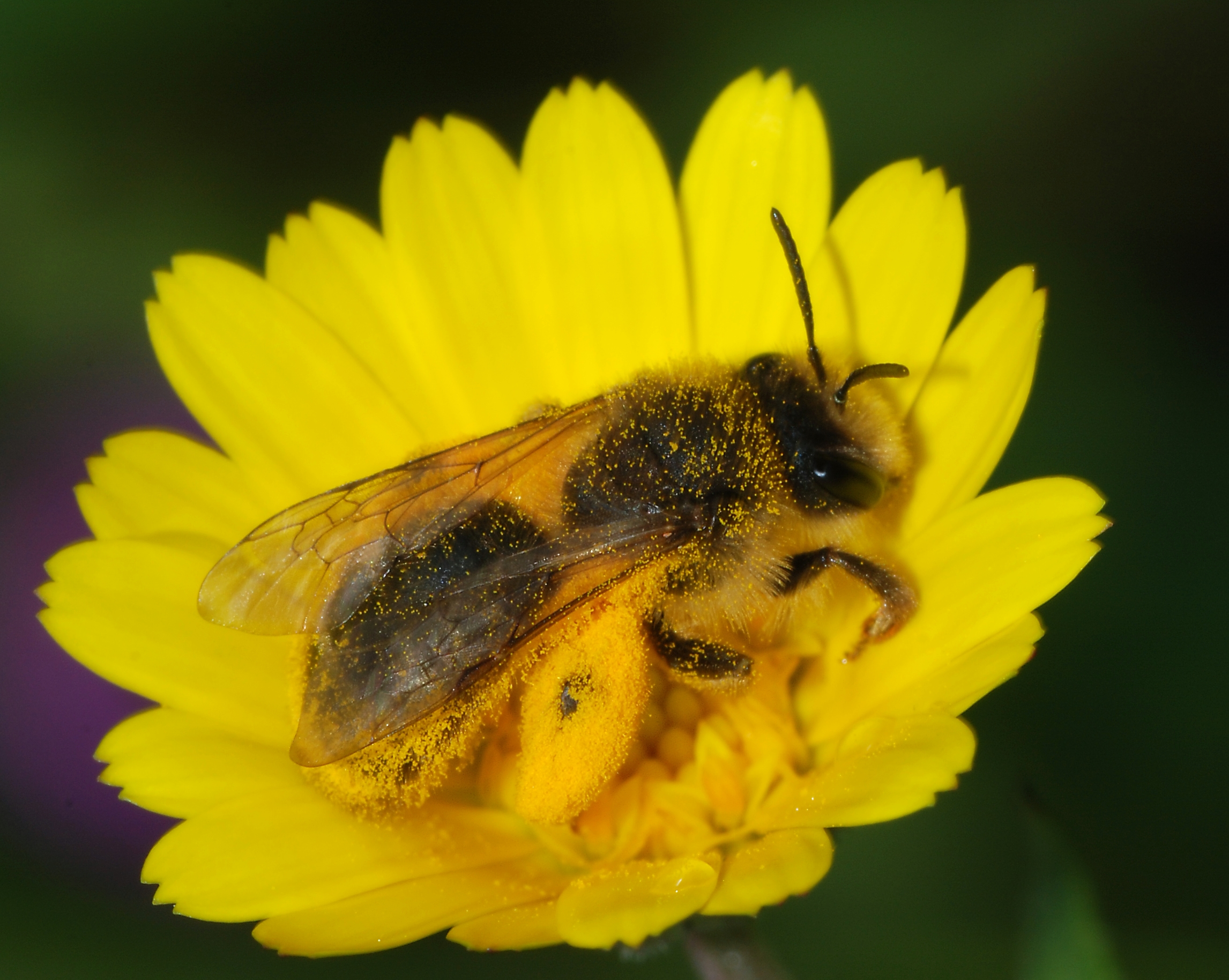- Andrenidae
Taxobox
name = Andrenidae

regnum =Animal ia
phylum =Arthropoda
classis =Insecta
ordo =Hymenoptera
subordo =Apocrita
superfamilia =Apoidea
familia = Andrenidae
subdivision_ranks = Subfamilies
subdivision =Alocandreninae Andreninae Oxaeinae Panurginae The family Andrenidae is a large (nearly) cosmopolitan (absent in Australia) non-parasitic
bee family, with most of the diversity in temperate and/or arid areas (warm temperate xeric), including some truly enormous genera (e.g., "Andrena " with over 1300 species, and "Perdita" with nearly 800). One of the subfamilies,Oxaeinae , are so different in appearance that they were typically accorded family status, but carefulphylogenetic analysis reveals them to be an offshoot within the Andrenidae, very close to theAndreninae .They are typically small to moderate-sized bees, which often have scopae on the basal segments of the leg in addition to the tibia, and are commonly
oligolectic (especially within the subfamilyPanurginae ). They can be separated from other bee families by the presence of two subantennal sutures on the face, a primitive trait shared with the sphecoid wasps. Many groups also have depressions or grooves called "foveae" on the head near the upper margin of the eyes, another feature seen in sphecoids, and also shared by someColletidae . Andrenids are among the few bee families that have no cleptoparasitic species. There are also a very large number of taxa, especially among thePanurginae , whose sting apparatus is so reduced that they are effectively unable to sting.The subfamily
Oxaeinae is rather different in appearance from the other subfamilies, being large, fast-flying bees with large eyes, resembling some of the largerColletidae ."Nocturnal" species
Andrenidae is one of the four bee families that contains some species that are
crepuscular ; these species are active only at dusk or in the early evening, and therefore technically considered "vespertine". In the Andrenidae, such species occur primarily in the subfamilyPanurginae . These bees, as is typical in such cases, have greatly enlarged ocelli, though one subgenus of "Andrena " that is crepuscular has normal ocelli. The other families with some crepuscular species areHalictidae ,Colletidae , andApidae .External links
* [http://zoologie.umh.ac.be/hymenoptera/galerie/exploredb.aspx?parent=43 "Andrena" Image Gallery from Atlas Hymenoptera]
* [http://www.bugguide.net Bugguide.net: Search for North American Andrenidae here]References
*
C. D. Michener (2007) "The Bees of the World", 2nd Edition, Johns Hopkins University Press.
Wikimedia Foundation. 2010.
